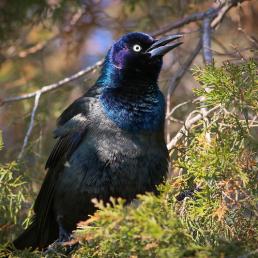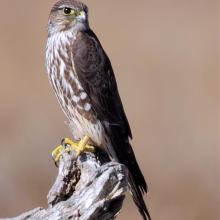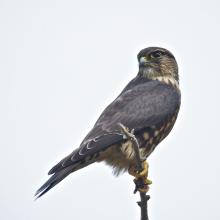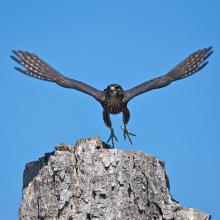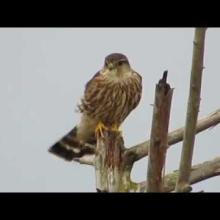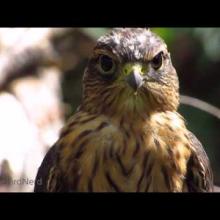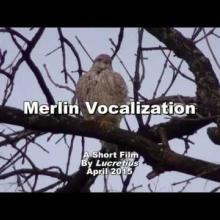

Join BirdNote tomorrow, November 30th!
Illustrator David Sibley and actor H. Jon Benjamin will face off in the bird illustration battle of the century during BirdNote's Year-end Celebration and Auction!
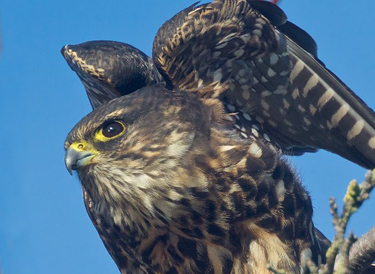
Early in December, photographer Gregg Thompson made a trip to Edison, a small town on the Samish Flats, north of Seattle. He was looking for a Merlin. And he found it, fairly low in a tree next to the road. Gregg said, “There are three or four coniferous trees in the center of town where the Merlin likes to perch.
"I sat scrunched down in my car for an hour and a half, while this bird really went to work on cleaning itself up. Notice what I think are bloodstains on its belly. There are different parts of the stretching routines that can be put together in different sequences but they seem to have stereotypic patterns.”
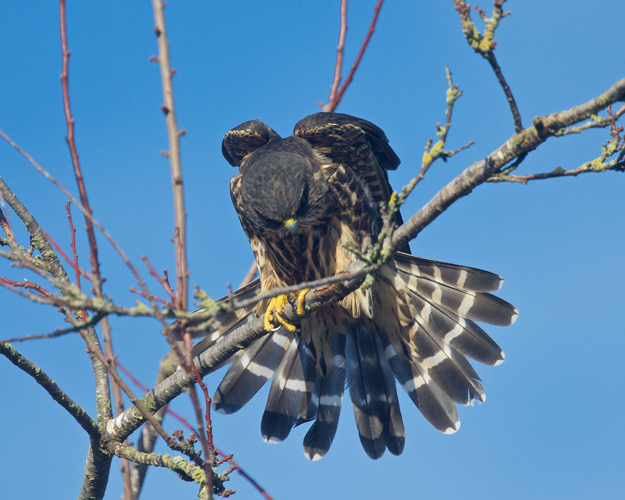
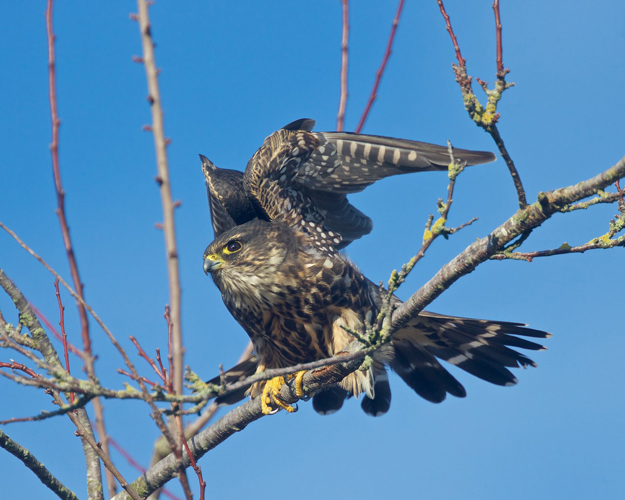
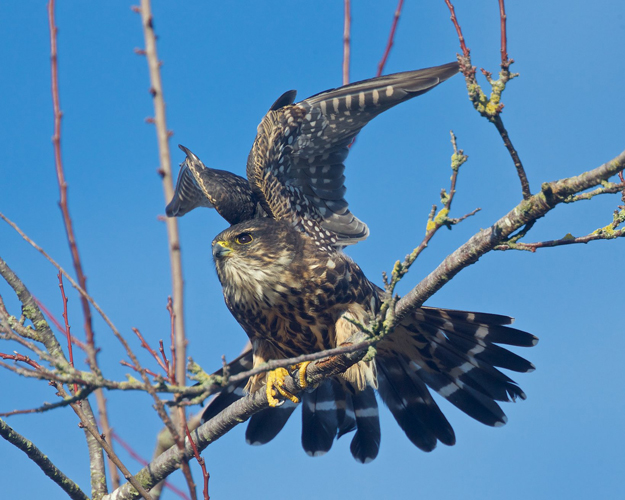
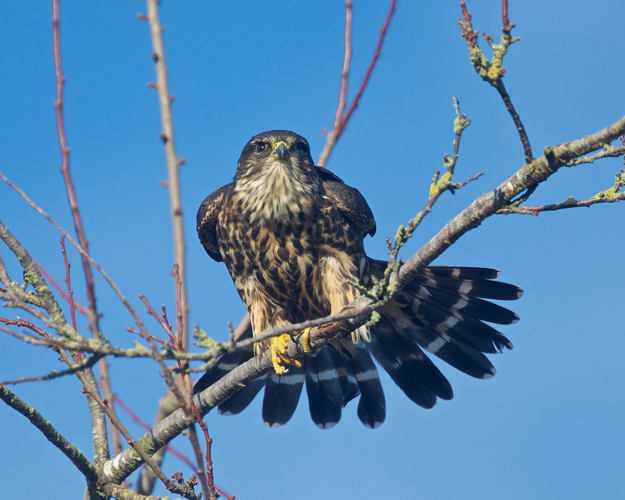
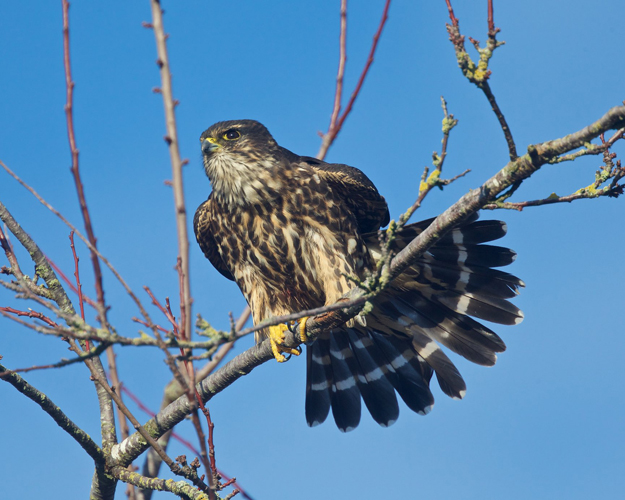
Local falcon expert, Bud Anderson of the Falcon Research Project, had more to add about the Merlin and its behavior.
“Those particular conifers are magnetic to Merlins, and I think it is because they are tall and centrally located within a wide open area where the falcons can see in every direction for a long way. Field birds (Red-winged Blackbirds, Brewer's Blackbirds, Brown-headed Cowbirds, European Starlings) and shorebirds (Dunlin) are all abundant in these fields right now. Plus we have seen Merlins hunting the passerines right in town many, many times. I guess bird feeders would influence the number of passerines there. Such a setting will always attract Merlins.
"As for the behavior, the act of stretching the wings over the head is called 'warbling,' and it has been termed that for centuries by European falconers. All falcons warble. It is almost always accompanied by a left wing/leg stretch and then a right wing/leg stretch. Just part of their DNA I guess.”
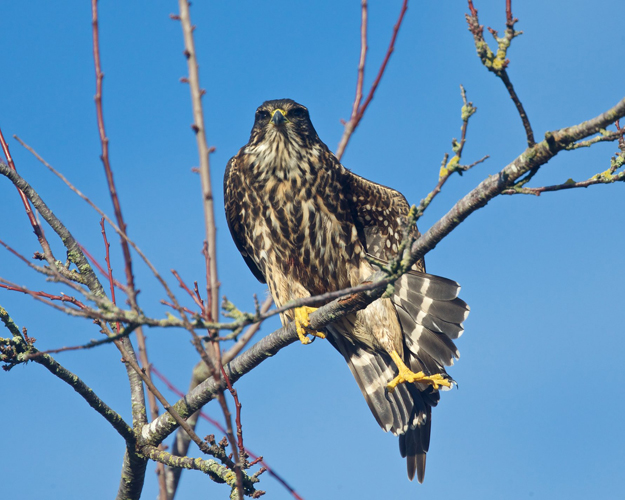
As Gregg says: Any day with Merlin opportunities is a good day.
###
Listen to a BirdNote story about Merlins.
And there's more: Winter Brings Falcons
Learn more about Bud Anderson.
